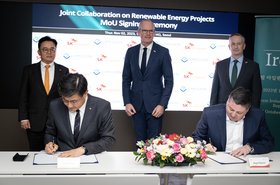We all know the truth or are at least curious about the true cost and impact of the technology we deploy and consume. Whether it is a convenience factor or a need to educate, we mostly choose to ignore the facts. The ugly truth is that no matter how good we get at efficiently utilizing the technology we deploy, from entire data centers to individual servers, the carbon created and embedded in those physical objects cannot and should not be ignored.
As someone who has pushed, developed, and deployed efficiency measures in the technology and specifically in the data center space, I agree with iMasons that this is an area of huge opportunity. Currently, there is no universal labeling system or mechanism to measure embodied carbon over the life of the materials used to build data center facilities or the products that fill them. If we don’t measure it today, what will our tomorrow look like? I think the current weather crises in many parts of the world make the answer to this question pretty clear.
The bottom line, we don’t measure it today, and almost any kind of measurement is better than ignoring it if we want to improve.
The embedded carbon dilemma
In 2021, the digital Infrastructure included 7 million data centers worldwide representing 105GW of power capacity consuming 594TWhs of energy. This equates to 2.4 percent of global energy consumption.
Power isn’t the only source of carbon. The University of Michigan Center for Sustainable Systems reports that typical buildings contain materials including concrete, metals, drywall, and asphalt. To make concrete, cement (a combination of ground minerals) is mixed with sand, water, gravel, and other materials. Structural steel made up 46 percent of material market share for structural buildings, followed by concrete. While strong and durable, both concrete and steel require significant energy to create and have higher embodied emissions than other materials.
You can’t really build a data center without concrete and steel. Get where I am going with this?
Let’s not forget about cryptocurrency and minting on the blockchain. According to CNN, a quarter of electricity in this country is powering bitcoin mining. That’s a lot of power and doesn’t take into consideration the energy that is used to mint other cryptocurrencies and NFTs.
Size doesn’t matter
The embedded carbon dilemma is an important issue for me because I’m personally invested in the majority of people, not just companies, that are directly involved with the iMasons Climate Accord. I’ve spent many an hour discussing the need for guidelines on how to reduce the impact of technology on our environment and improve the livability of our planet. These conversations have been had with many of the world's largest technology companies and the leaders who are thankfully on the same page. Working with these leaders and being a part of this initiative is gratifying and important for my company and the people I work with. We believe in the mission of the Climate Accord and want to send a strong message to other leaders in companies of our size (btw, we are a startup working on growth). Size doesn’t matter.
You don’t have to be a big company to make a difference. Remember that phrase “Think globally, act locally”? It applies here as well. The world of technology and all of the companies in its sphere are members of a powerful ecosystem. This ecosystem is changing the world at a very fast pace. Each and every effort we make to operate and innovate more efficiently and sustainably will help make the world a cleaner and better place.
Make it your mission
My team and I have the privilege of working with some of the most amazing technology companies in the industry, many of them household names, at least to geeks like me. Part of our mission is to influence where our customers buy services from and how our partners and community can more effectively reduce their carbon footprint. We’ve created guidelines around the companies we work with and ask key questions regarding their sustainability efforts and initiatives. Soon we'll be adding the iMasons guidelines to how we operate. One more step on the road to carbon neutrality.
Are efforts like these part of your initiatives? Do you have an internal sustainability officer or energy consultant working with you? Like I said above, size doesn’t matter. Start thinking about ways you can be a part of the solution.
Won’t be easy but will be worth it
While the effort won’t be easy, the folks behind this effort have the desire and the resources to push for and directly affect change. There will be issues with how to measure and where carbon creation can or can’t be removed. There will be questions about what and how we measure, we’ll also need consensus on standards, but with all that being said, it’s a journey worth taking. Any effort we make is likely to reduce more carbon than it creates and that is a positive outcome. Are you ready to join the tribe?




